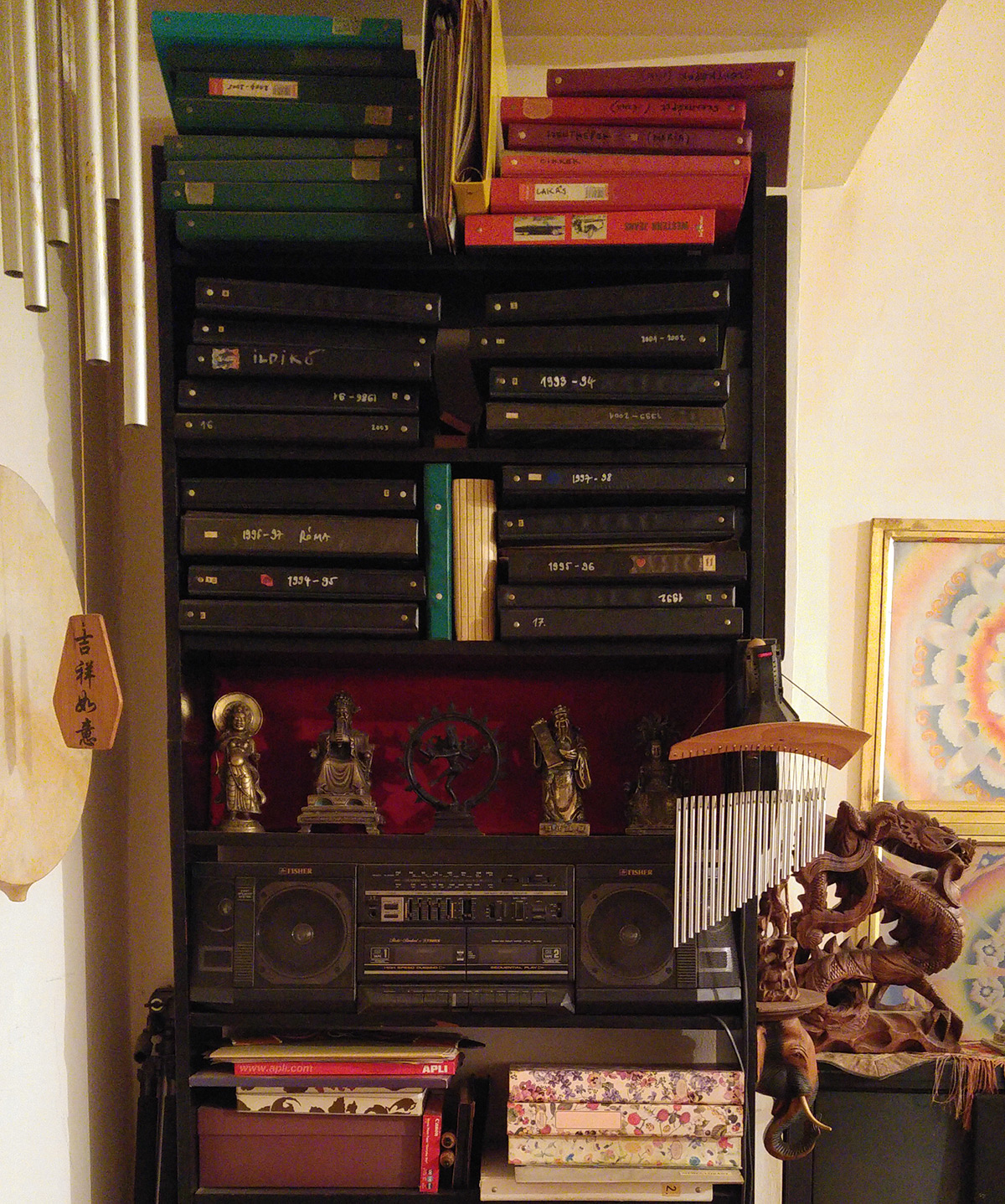Lóránt Méhes, or “Zuzu” as everybody calls him, joined the alternative scene of Budapest at the beginning of the seventies (gathering then in the Kárpátia restaurant, and later in the Club of Young Artists), after graduating from the High School of Applied and Fine Arts. Together with his friends, he visited daily the haunts of university students, young writers, poets, visual artists, filmmakers, and musicians.
Zuzu became interested in the photographic recording of the milieu; his paintings were often inspired by his photos. After a while a significant number of photographs about his companions accumulated at his home. His family history can be considered a prelude: during the Second World War his father served on a reconnaissance plane as a photographer, and mastered the handling of cameras.
Later, after returning from the Soviet labor camp, his father got a camera of his own, often taking photos and arranging them in albums. However, when his parents were divorced, his father took half of the images with him (which disappeared later), so the starting point for Zuzu’s compilations were the albums remaining at his mother’s place. The album of his father became a prefiguration, an extension in time for his compilations (as he did not have any children himself, social albums substituted family albums in his case).
He kept the photos in a box at first, and started to arrange them into albums only during the eighties. Chronology served as the initial principle, but the basis of the compilations became the relation of the images to each other (on a single page there are usually several photos). At the beginning he collected images from different sources, but after a while his own photos started to dominate. Since the seventies he owned cameras, but taking photos became habitual only later.
The chronology of the albums follows the events and locations of his biography. There is for example an album from his high school period, or another with photos taken during a longer stay in Italy. There are many recurrent persons, like his first wife, Marietta Méhes, who later became a singer and an actress, or János Baksa Soós, a close friend, colleague, and teenage idol, but the movie director Gábor Bódy also appears several times, or Tamás Pajor, a rock-and-roll singer from a younger generation (who converted to a new age religious group in the mid-eighties), and his musician-actor companions, Henrik, Hunyás, and Zsiráf.
The orderliness of the albums is apparent at first sight; they were composed with resolute hands. The rhythm of the images, the relations of the motifs to each other suggest an edited structure. The series of photos often tells stories. There are many images where the protagonists and the background are mounted together from different sources, but not arbitrarily, rather for compression, in order to let people and places show their characteristic face of the moment. He utilized every photo that made it into his possession.
Although the level of composedness would make it conceivable, Zuzu does not consider these compilations to be artwork, more as background material. At the same time, he often selects one as a model for a large format painting. That is why these social albums can be considered a visual biography, while the individual photos are preliminary studies for artworks. He already had the thought of bringing it together with his written diary, but its early chapters are still missing.
Tumbling through the albums the viewer can get an insight into the weekdays and feasts of the nonconformist community, their social life, and its locales (cafés, pubs, home parties, galleries, museums, and other cultural institutions). The compilations demonstrate, in parallel to his artistic activities, that it was also possible to live laissez faire in the oppressive world of the seventies and eighties in Hungary.

